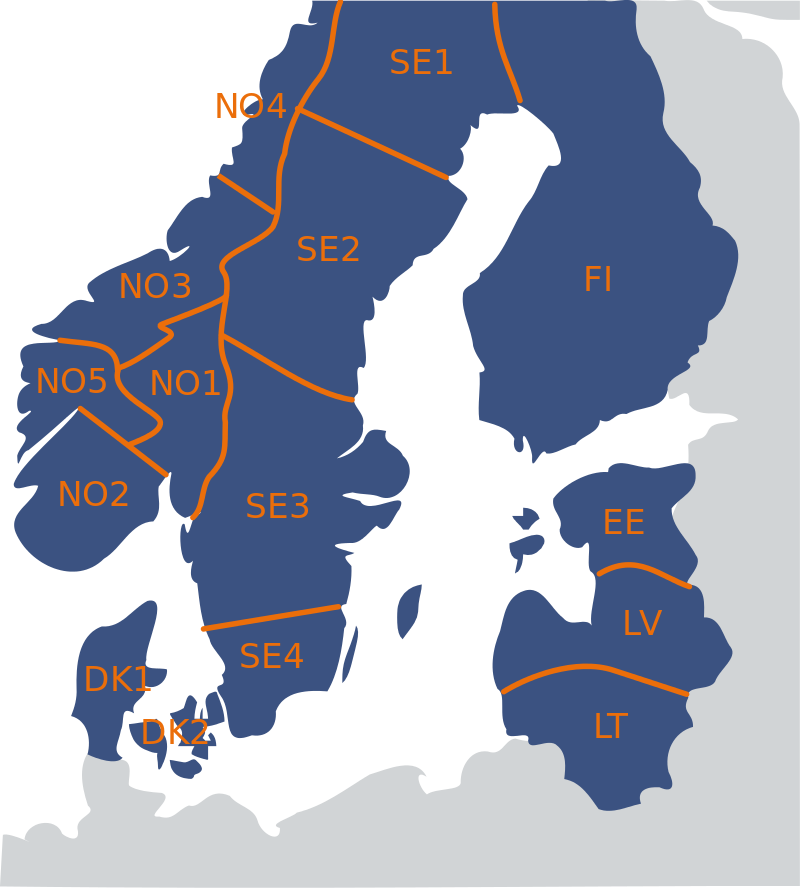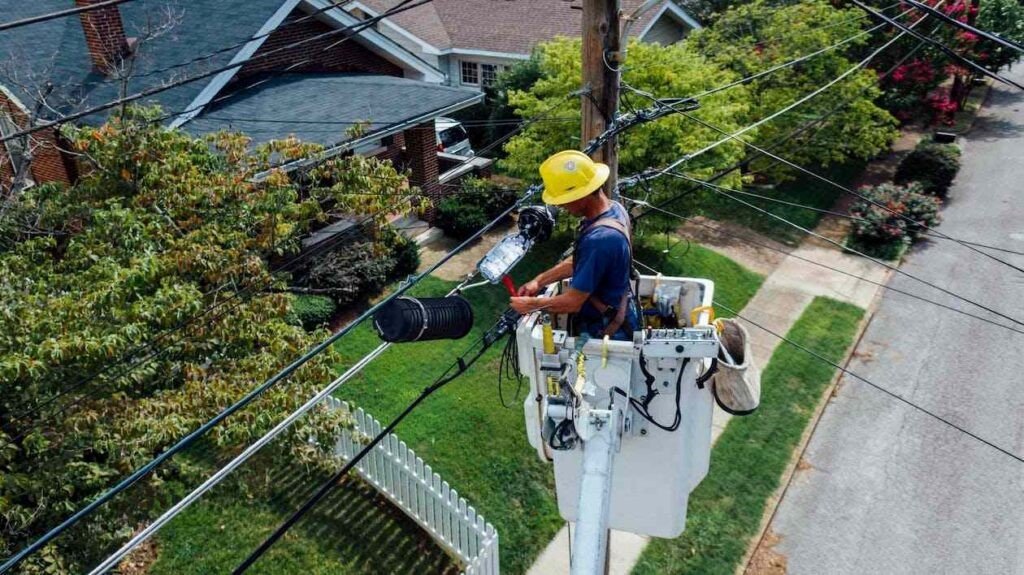
Norway is divided into 5 electricity regions and this division is based on the energy production in the region and access to electricity. There are some bureaucratic bottlenecks concerning the power grid that is between the North and the South. This means that electricity cannot be transmitted freely and easily between the two regions.
Norway is not the only country with this arrangement. There are other countries in the Nordic region that operate this model of electricity generation and transmission. Denmark has 2 power regions while Sweden has 4.
A lot of people are perplexed as to why this should be so; we will address the reason in this article and also help you understand how it affects your electricity tariff. Additionally, you will figure out how you can make the best of this arrangement.
Understanding Power Regions

The nation of Norway is divided into 5 power regions based mainly on the pricing of electricity in the region. You can look up this: bestestrøm – strømregioner for more information. Countries that do not have these divisions usually have the same tariff for energy across the board. However, due to these divisions, people pay different prices based on the region where they live in the country.
Other words used for power regions are power areas, price areas, or price zones. Below are the 5 regions:-
- NO-1 Eastern Norway
- NO-2 Southern Norway
- NO- 3 Central Norway
- NO- 4 Northern Norway
- NO-5 Western Norway
The reason for this division is because the production and access to electricity vary significantly across regions. The power balance in the price zones determines the deficit or surpluses of energy. Those areas that have high consumption but low production would have to receive transmission from other zones.
Price Differences in Power Regions
As we stated earlier, these regions are also referred to as price zones. This therefore means that electricity prices will differ in all these regions. Recently, the Northern Norway region has experienced significantly lower energy costs than the Southern and Eastern regions. At some points (mostly during winter), the tariffs in the South have been as high as 10 times more than in the Northern region.
On average, the energy cost from the Power Exchange Nord Pool as of February of 2023 in the Northern price zone was 25.33 øre per kilowatt/hour while it was 176.04 øre in the Southern region. This is a typical example of the price difference that we are talking about.
Bear in mind that this cost is inclusive of VAT but it does not apply to the Northern region because of some political factors in the district.
Factors that Contribute to the Price Difference in Regions
Many things contribute to the disparity in energy costs in these 5 regions of the country. Find below the most important factors:-
- Water levels in the reservoirs
- Bottlenecks in the power grid
- The electricity pricing system in Europe
Water Levels in the Reservoirs
Norway’s energy production is mostly from hydropower. The power reservoirs require a certain level of water and to get that quantity of water depends on the level of rainfall. The different regions in the country have different levels of rainfall which determines the level of hydropower available for energy production in the region.
When the water levels are low, it reduces the production of electricity which in turn affects the price in that region. In recent times, the Eastern and Southern regions have experienced less rainfall than expected and this has led to an increase in energy bills. The Northern and Central regions on the other hand experienced massive rainfall and this has kept the cost of energy lower than other regions.
Bottlenecks in the Power Grid
This refers to the areas or points in the power grid that have constraints or restrictions to the flow of electricity. The constraint in the transmission of electricity in Norway is one of the major reasons why there are 5 price zones in the country. The bottlenecks do not allow a free flow of current between the zones especially the Northern and the Southern zones.
That is why the cost cannot be spread out evenly and the biggest problem spot is the central zone which has the lowest transmission capacity that stops the flow of electricity. There are many reasons why these bottlenecks occur and we have duly noted that they affect the efficiency of the grid power transmission.
Causes of Bottlenecks
Below are some of the causes of these bottlenecks:-
- Insufficient capacity
- Grid congestion
- Physical limitations of transmission lines
- Interconnection issues
To tackle these issues will involve upgrading the infrastructures and grid and also improving planning and coordination between the operators of the grid. When/if these bottlenecks are eliminated or reduced, the power grids will operate reliably and more efficiently and will be sustainable enough to meet consumers and support input from other renewable energy sources.
The Price Level of Electricity in Europe
Many countries in the Nordic region and Europe are part of the Power Exchange Nordic Pool where they buy and sell electricity. These countries include Norway, Netherlands, Great Britain and Germany. This therefore means that the cost of energy in some parts of Norway will be greatly affected by the price of electricity in Europe.
The region that is most affected is usually the Southern region because they import electricity from Europe. However, the Northern and Central regions are not fully affected by this. The war in Ukraine and Russia’s response to sanctions from the West has driven up the price of gas. This in turn has caused an increase in electricity costs in Europe.
Knowing your Power Region

We have stated that your power region is also your price zone. These regions are made up of a number of municipalities and counties. Funny enough, the municipality you live in does not determine the power region you belong to. You may live in NO-1 which is the Eastern region and belong to NO-3 region which is the Central region.
Therefore to be sure of the price zone that you belong to, you have to contact your supplier. You can also get that detail from your electricity bill. Click here for more details.
Tips for Choosing Electricity Supplier in any Power Region

After you have found out the power region that you belong to, it is important to choose the right electricity supplier because this will determine how much you will spend on energy. More so, the supplier you choose will also determine the source of your energy. Therefore, we have collated some tips to help you as you go shopping for an electricity supplier:-
- Be sure that you understand the power regions as this will help you know the peculiarities in your price zone.
- Check out as many suppliers as possible and compare their prices and services. You can use comparison tools online or reach out to the suppliers directly.
- Look out for renewable energy options
- As you compare suppliers, the parameters to use for the comparison include the length of the contract, the pricing structure which can be fixed or variable, and every other charge included in your bill.
- Evaluate the prices and pick the one that best suits your financial circumstances and budget.
- Read reviews from past and present customers.
- Look out for additional services that can be offered such as smart home solutions or energy efficiency programs.
- Evaluate their customer service as this will determine whether you will get good value for your money or not.
- Study every term and condition and be sure you understand them and are okay with them.
- Insist on transparency in the billing method.
Conclusion
If you are new to Norway, one of the things that you need to understand as fast as possible is these power regions and how they operate. We have emphasized how different zones have different pricing structures depending on the production of and access to electricity. So if you do not pay attention to the power costs in a region before deciding to live there, you may short-change yourself.
Take time to evaluate different regions and if for reasons of work or other obligations, you must live in those regions with high electricity tariffs, you have to carefully choose the supplier that you will sign up with.




